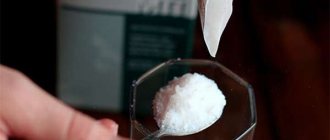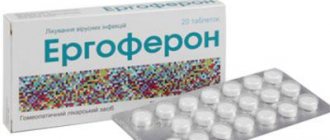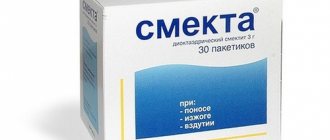Salmonellosis is an acute intestinal infection caused by bacteria belonging to the Salmonella genus, which numbers over two thousand species, most of which are pathogenic for humans and animals.
Rapid reproduction and partial death of salmonella, penetrating the gastrointestinal tract through the mouth, occurs in the deep layers of the mucous membranes of the small intestine.
The death of salmonella is accompanied by the release of endotoxin, a bacterial toxic substance that provokes general intoxication of the body, the occurrence of diarrhea and disturbances in water-electrolyte balance.
Complications of infection
Salmonellosis is a severe intestinal infection that occurs in adults and children.
The infection enters through contaminated food products. The cause of the disease is bacteria of the genus Salmonella. The development of intoxication and damage to the digestive tract is also characteristic.
Complications:
- heart failure;
- damage to the central nervous system (cerebral edema, coma);
- dehydration;
- toxic shock;
- disruption of the normal functioning of the kidneys and liver.
Treatment of infection includes taking antibacterial drugs and restoring water-salt balance. Infusion therapy is used - intravenous administration of glucose and electrolyte solutions. After the condition has stabilized, a special diet is prescribed.
Diet menu
The permitted menu is carefully selected to avoid additional injury to the digestive tract. The main principle of the diet is to reduce the amount of food rich in carbohydrates and fats and maintain the required amount of proteins.
This rule allows you to avoid the proliferation of pathogens and speed up the healing process.
All dishes are steamed or boiled, contain no salt and are served pureed. Meals are fractional. The first day is a fasting day, only heavy drinking is allowed.
Prohibited items in the diet are:
- baking, bakery products;
- fatty meat broths;
- fatty fish dishes;
- milk products;
- fresh fruits;
- carbonated drinks, coffee;
- sweets.
Allowed to use:
- dishes from lean meats and fish;
- mashed porridge;
- fresh cottage cheese;
- baked apples;
- low-fat meat broth;
- omelette.
The only allowed food for infants is mother's milk.
What foods cause illness?
Animal protein is a favorable environment for the proliferation of salmonella. Many strains of bacteria can withstand freezing and tolerate pickling and smoking very well. To prevent salmonellosis, proper cooking of food is necessary.
Bacteria are stored for a long time:
- in meat (up to 6 months);
- in dairy products (in kefir - 4 weeks, in cow butter - 3 months, in hard cheese - up to a year),
- in poultry eggs (quail, goose, duck).
It is important to be careful when consuming fresh berries, herbs and vegetables. Animal feces are often used as fertilizer. Salmonellosis pathogens persist in dry manure for more than 2 years. The lifespan of bacteria in soil is 18-19 months.
Ensuring the functioning of the digestive tract
During the course of salmonellosis, the functioning of the intestines and internal organs is disrupted. The liver and kidneys suffer, which requires an adequate response and it is strongly recommended to stimulate metabolic processes in these organs.
To do this, use medicinal herbal decoctions:
- St. John's wort;
- peppermint;
- corn silk;
- Birch buds;
- chamomile flowers.
Decoctions of St. John's wort and mint ensure the outflow of bile and prevent its thickening. Decoctions of corn silk and birch buds stimulate the functioning of the urinary organs and prevent the accumulation of acetone in the blood.
A chamomile decoction has a strong antiseptic property and has a detrimental effect on pathogenic bacteria and microbes, promotes the healing of internal ulcerations and the restoration of flora in the body.
Diet for salmonellosis in adults and children
After the bacteria die, toxic substances are released in the stomach. Toxins negatively affect blood circulation and cellular metabolism. Damage to the intestinal wall leads to disruption of the digestive process.
You will like the article: “ Incubation period for salmonellosis in adults and children .”
Therapeutic nutrition for salmonellosis (table No. 4) is aimed at reducing the aggressive effect of food on damaged intestinal epithelium and restoring normal microflora. It is very important to eliminate dehydration and replenish micronutrient deficiencies. For this, herbal decoctions (calamus root) are used. Alkaline mineral waters are beneficial.
Recommendations for children
Dr. Komarovsky suggests continuing to feed the child even with severe salmonellosis. The diet is selected in accordance with the age needs of the baby. You cannot force a child to eat. Lack of appetite with salmonellosis is associated with intoxication. The acute period of the disease can last for 5 days in children.
Primary requirements:
- limiting the content of salt, fats and carbohydrates;
- protein balance;
- reduction in the amount of feeding at the onset of the disease by 20% of the daily norm (in case of severe intestinal damage up to 50%);
- eating in small portions (dividing the daily diet into 6 meals per day);
- introduction of lactose-free and fermented milk products.
The recommended method of preparation is boiling. It is also possible to use a double boiler. Food should be easily digestible, tasty and varied.
After eliminating intoxication and dehydration, diet 4b is prescribed, which is characterized by the gradual introduction of new products (semolina, vegetable puree). A course of therapeutic nutrition is prescribed for four weeks.
A common problem in infants is lactose intolerance. The pathology is characterized by frequent regurgitation, bloating, and loose stools. In this case, it is recommended to transfer the baby to special mixtures with low lactose content (Nutrilon Soya, Frisopep).
After recovery
The diet after salmonellosis is based on a special diet ㅡ table 4c according to Pevzner. This food has the following features:
- reduced salt intake;
- adding protein products;
- food is cooked directly in the oven or in a double boiler;
- 5 meals are served daily.
It is recommended to eat the same food as during illness, but there is no need to thoroughly wipe the dishes. It is important to monitor your drinking regime: tea, decoctions and infusions will help you finally cope with pathogenic bacteria.
Therapeutic diet for salmonellosis
What can you eat if you have salmonellosis? On the first day of illness, it is recommended to offer sweet tea to the patient. From the second day, rice water and bird cherry jelly are allowed.
After reducing intoxication, pureed cottage cheese and boiled meat are introduced into the menu. The diet for salmonellosis in adults includes high-calorie foods, the consumption of which leads to consolidation of stool. Food should not be hot or cold.
Recommended Products
| Porridge | Buckwheat White rice Manna | It is recommended to cook in water |
| Soups | With pureed vegetables, chopped meat | Cook with recycled broth or water |
| Bread | Wheat | Dried. |
| Meat | Chicken Beef Veal Turkey meat | Minced into minced meat |
| Fish | Pollock Hake | Used for making cutlets |
Jelly made from various berries (dogwood, quince or black currant) is useful. You are allowed to drink fruit infusions and compotes. When preparing drinks, it is recommended to choose recipes with minimal sugar content.
The main indicator of the suitability of the diet is the patient’s condition. There should be no abdominal pain, flatulence or other signs of indigestion. To monitor the functioning of the digestive system, an ultrasound examination is required.
Prohibited Products
| Bread | From whole grains, Freshly baked, Borodinsky, Sweet pies, Bread with seeds and bran | Products activate fermentation processes in the intestines. Bread with additives is difficult to digest. The seeds can damage the inflamed mucous membrane. |
| Porridge | Millet Corn Barley | Poorly digestible. |
| Legumes | Peas Chickpeas Beans | Causes flatulence. |
| Sweets | Honey Candies Jam Dried fruits | They enhance fermentation processes and stimulate contractions of the intestinal wall. |
| Dairy | Whole milk Sour cream | Provokes an attack of diarrhea. |
| Fruits and vegetables | Cabbage Boiled beets Fresh cucumbers Grape Plums of different varieties Citrus | They enhance fermentation and activate intestinal contractions. |
Strong rich broths, canned food and sausages are prohibited. It is recommended to use milk in diluted form to make pudding. Freshly squeezed vegetable juices are beneficial.
What can you eat
During salmonellosis
Regardless of whether the patient is in a hospital or undergoing home treatment, for as long as the condition is characterized as acute, his menu consists of the most gentle products. The diet involves eating five meals a day in small portions (the so-called fractional diet), as well as excluding certain foods and methods of preparing them (meals should be steamed or boiled). Be sure to grind the ingredients with a blender or grind them: food with a puree consistency is digested faster and easier and does not irritate the inflamed intestinal walls. In addition, food should not be cold (below +15°C) or too hot (above +50°C).
The daily menu consists of the following products:
- You can eat no more than two chicken eggs per day - soft-boiled or in the form of a steam omelet;
- 150-200 g of pureed sweet fruits or berries (simmered in water or steamed, in the form of jelly or mousse - without added sugar);
- jelly from sweet berries (blueberries are especially useful), green and black tea, a decoction of rose hips and apple peels;
- 150-200 g low-fat cottage cheese (pre-mashed);
- lean varieties of fish and meat in the form of steam cutlets, meatballs;
- watermelons: thanks to the diuretic effect, the body is actively cleansed of toxins and replenishes fluid loss;
- white crackers, which help saturate the body with carbohydrates without causing fermentation in the intestines and stomach;
- light chicken broths, pureed vegetable soups;
- semolina, buckwheat, grated rice: porridge is cooked only in water, without adding sugar, butter, salt.
It is imperative to drink 2-4 liters of fluid daily, from permitted drinks, water and electrolyte solutions.
During the rehabilitation period
The recovery period after salmonellosis usually exceeds the duration of the disease itself. During the period of illness, the infection causes damage to the body, in particular the gastrointestinal tract. This is especially reflected in the condition of patients with existing chronic diseases of the gastrointestinal tract, since against the background of salmonellosis these diseases often worsen, causing the patient even more discomfort.
Compliance with a diet is the main requirement during the rehabilitation period after an illness, which lasts 3-4 weeks.
What to eat after suffering from salmonellosis? The menu for convalescents begins to expand gradually. In the first days of improvement, the diet contains only the most gentle foods:
- low-fat fermented milk (cottage cheese, kefir, yogurt without additives, fermented baked milk);
- lean types of fish and meat, steamed or boiled, soufflé, meatballs, cutlets;
- beef or chicken liver in the form of souffles and pates;
- buckwheat, rice and semolina porridge, which can be prepared with the addition of a small amount of milk and salt, but without butter;
- baked apples, bananas, grated berries;
- quince puree;
- baked or boiled vegetables, mainly carrots, potatoes and zucchini;
- vegetable soups;
- yesterday's white bread and crackers from it.
You still need to drink as much liquid as possible - water, green tea, fruit drinks and jelly.
After 4-5 days, if the patient has normal stool and there are no complaints about health, you can begin to gradually introduce new products into the daily menu, on average, one new product every two days. You can start with butter, adding it to porridge in small quantities. Next, you should pay attention to fruits or vegetables, pasta, and barley porridge. Heavy and unhealthy dishes and drinks, for example, smoked meats, lard, sausages, spicy seasonings, fast food, snacks and snacks, sweet carbonated waters - all this can be started to be consumed no earlier than a month after the completion of the active stage of treatment.
Nutrition during rehabilitation
After an intestinal infection, digestive disorders often develop. Nutrition after illness should be gentle. A guarantee of recovery is strict adherence to the diet. A favorite dish can cause a relapse. The duration of the diet after treatment for salmonellosis depends on many factors.
These include:
- severity of clinical manifestations;
- presence of concomitant diseases;
- patient's age;
- type of infection.
For adults with good immunity, it is recommended to stick to this diet for a month. In weakened patients and children, restoration of the digestive system is slow. Returning to a normal diet occurs gradually and carefully.
Answers to popular questions
Chicken eggs and eggs of other birds are the most popular product that is found in every home. At the same time, it is one of the main sources of salmonellosis, especially raw and insufficiently processed eggs. To exclude possible infection when using eggs for food, you need to remember some rules.
You cannot buy eggs by hand, in spontaneous markets, and you cannot take eggs with shells stained with droppings and blood. After touching the shell, you should wash your hands. In the refrigerator itself, eggs are stored on a separate shelf, or better yet, in a separate closed container.
If the bacteria is present only on the shell, this will be enough to neutralize the bacteria. However, if microorganisms have penetrated through the shell, it becomes more difficult to disinfect the egg - to do this, you need to process the product at the appropriate temperature. Deep freezing will not help prevent salmonellosis - the bacterium remains viable at sub-zero temperatures throughout the year. If you boil an egg at a temperature of 55 degrees Celsius, the cooking process will take one and a half to two hours. You need to boil eggs in water at a temperature of 70 degrees and above, for 12-15 minutes. Eating raw eggs of any bird is extremely dangerous precisely because of the threat of infection, so in order to avoid getting sick, you should not get carried away with dishes and sauces with raw eggs, especially in the summer.
It is almost impossible to achieve full recovery and recovery from illness without following dietary rules. The diet for salmonellosis is aimed at suppressing the symptoms of the disease and accelerating the onset of recovery.
Specialty: therapist, nephrologist.
Total experience: 18 years.
Education: 1994-2000 Stavropol State Medical Academy.
Training:
Salmonellosis is a very terrible acute intestinal infection transmitted by Salmonella bacteria. Most often, bacteria enter our body through food. Our greatest fear is getting infected from raw chicken eggs, which is why many people refuse soft-boiled eggs and tiramisu desserts (raw eggs are used for the cream).
Margarita Provotorova, an expert at the Center for Molecular Diagnostics of the Central Research Institute of Epidemiology of Rospotrebnadzor, talks about what other products Salmonella can hide in, and how to protect yourself from this scourge:
When talking about salmonellosis, many people think that the source of infection is exclusively raw chicken eggs. But this is not entirely true.
Salmonellosis belongs to the group of anthropozoonotic diseases*, that is, the source of infection can be chicken, turkey and waterfowl (geese, ducks), as well as their eggs, which, by the way, can be infected even before they are laid. Not only raw eggs are dangerous, but also products prepared using them - homemade mayonnaise, egg powder, protein creams and desserts. Even ice cream made with raw yolks can cause salmonellosis.
Salmonella can be found in cattle and pig meat, milk and dairy products. A person infected with salmonellosis is also a source of infection.
The greatest danger for infection of others is posed by asymptomatic carriers - when a person has no clinical manifestations of the disease, but actively releases bacteria into the environment. And, of course, asymptomatic carriers are very dangerous if they are involved in the preparation or distribution of food (for example, in canteens, cafes and restaurants, food factories), as well as if they are involved in the sale of food products.
Video: salmonellosis with Elena Malysheva
Read further:
How to prepare chicken broth in case of poisoning for children and adults
Maiden grapes are poisonous or not for adults and children - application
Rehabilitation after a heart attack, prevention of new attacks and care
Salmonellosis in quail and chicken eggs - how to recognize
What to do in case of sausage intoxication at home: treatment methods
Article rating:
( 1 ratings, average: 5.00 out of 5)
Share with friends:
You may also be interested in:
Viral food poisoning in adults and children - symptoms and treatment
Salmonellosis in quail and chicken eggs - how to recognize
Analysis and diagnosis of salmonellosis - methods for children and adults
Incubation period for salmonellosis in adults and children
Traditional medicine
Salmonellosis is a contagious and dangerous disease. Self-treatment can result in serious complications. Traditional medicine recipes can be used in conjunction with drug treatment and only under the supervision of a doctor.
A decoction based on oak bark has an anti-inflammatory and astringent effect, stops intestinal and gastric bleeding. To prepare the decoction you will need to take 1 tbsp. l. crushed oak bark and fill it with 1 glass of water. The mixture must be kept on gas for at least 25 minutes. Next, the broth is infused for 15 minutes and filtered. Take 5-10 ml of the product hourly.
A product based on dried and crushed burnet roots will help cleanse the body of toxins, relieve pain, and have an astringent, antiseptic, anti-inflammatory, and antibacterial effect on the patient’s body. To prepare the decoction you will need to take 1 tbsp. l. roots and fill them with 250 ml of water. The mixture is simmered over low heat for at least 30 minutes. After complete cooling, the product is filtered. It is used at least 6 times a day, 15 ml.
Security measures
Personal prevention of salmonellosis is quite simple. Be sure to wash your hands before preparing food, before eating, and after using the toilet. If you keep livestock or poultry, be sure to wash your hands after handling them.
Do not purchase food or prepared food products (milk, eggs, ready-made salads with mayonnaise, meat products) from hand or from unauthorized retail outlets.
If the milk has not been sterilized, you bought it from a local farmer, from your neighbor’s grandmother, it is better to use it boiled.
Be sure to adequately cook the meat. It should be well cooked.
To cut raw meat and vegetables, you must use separate boards and knives to avoid infection, for example, of vegetables in salad if you cut them on the same board as the meat. Even if you wash the board well after use, this may not protect it from bacteria.
*Anthropozoonotic diseases are infectious and invasive diseases common to humans and animals. A person becomes infected with them through contact with sick animals, corpses, during skinning, when cutting carcasses, and processing animal raw materials. Infection can occur through consumption of meat and other animal products. In addition to salmonellosis, leptospirosis is also such a disease (ed.).
Salmonellosis is an intestinal infection that is widespread, especially in the summer. The source of infection is often food that contains bacteria. The causative agents are a large number of species of bacteria from the Salmonella series. It is easier to prevent any disease than to treat it, so the question arises, what foods can cause salmonellosis?
Routes of infection
This disease is mainly characteristic of people with weak immunity; young children often suffer from it. There are different ways of becoming infected with salmonellosis.
Food products are the main source of infection for salmonellosis. Moreover, essentially all foods eaten can cause the disease. Infection of the body is the impetus for the onset of the development of the disease. A favorable environment for the development of the pathogen is protein foods. For example, meat products rank first among cases of infection and account for 70-75 percent.
Second place goes to dairy, fish products and egg dishes. However, plant products, due to unfavorable conditions for bacterial growth, are a rather rare source of infection for salmonellosis. Products that are most susceptible to contamination must undergo mandatory heat treatment and be served as warm or hot first and second courses. With prolonged storage of food, the number of salmonellosis bacteria increases, which increases the risk of salmonella poisoning.
As with other intestinal infections, salmonellosis can occur when a healthy person comes into contact with a sick person. It is known that the salmonellosis bacillus is released from the patient’s body only through feces. In this case, transmission of infection from person to person is unlikely. Infection occurs mainly through dirty hands and poor hygiene. Those most susceptible to the disease are susceptible people with weakened immune systems, as well as those with underlying health conditions and the elderly.
Favorite pets are also carriers of bacteria: kittens, cats, dogs, turtles and hamsters. Therefore, after interacting with your four-legged friends, be sure to wash your hands well and preferably do not kiss your pets.
Infection with salmonellosis is usually not widespread. The disease occurs in large groups of people during hospital treatment of weak and premature babies.
Infection with salmonellosis also occurs through water, when the source of salmonellosis enters the water in the form of excrement of infected animals or feces of sick people. Water is an unfavorable environment for the proliferation and concentration of pathogenic bacteria, so there is a small amount of them there. Salmonellosis poisoning in this way occurs rarely in humans; it is typical mainly for animals.
The transmission of salmonellosis through dust poses a threat to people who raise pigeons and have relationships with other birds. In strong winds, it is possible to spray the excrement of pigeons that live near people, which can lead to infection of nearby premises. Infectious bacilli have the ability to persist and multiply in bird droppings for a long time. Poor ventilation in buildings can also cause poisoning by salmonellosis bacteria. In children's infectious diseases treatment facilities, salmonella is sometimes detected even in the air.
Salmonellosis, like all intestinal diseases, is not spread by airborne droplets; this circumstance is taken into account when developing preventive measures.
Bacteria survival
Salmonella are quite resistant to survival in the environment. In food products such as milk, butter, eggs, salmonella remain active for a long time, even if the products are stored in the refrigerator. Salmonella can multiply in infected meat even when smoked and salted.
So storing food in the refrigerator is right and true, but it will not protect against salmonellosis infection if an infected product is eaten. Moreover, low temperatures are favorable for salmonella.
But high temperatures, on the contrary, are dangerous. At a temperature of 100 degrees C, the death of the pathogen occurs.










